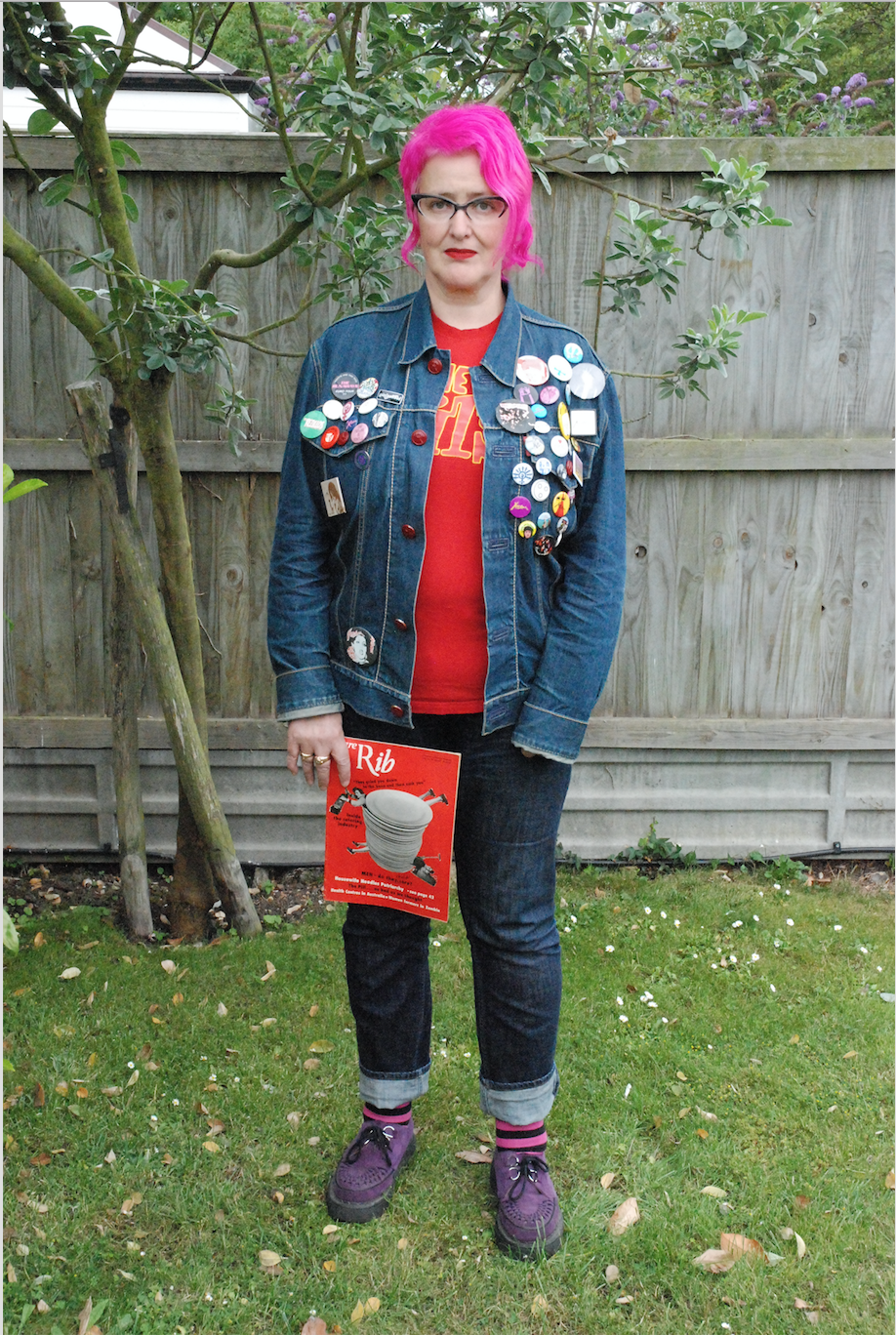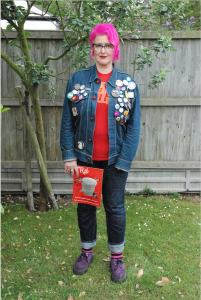Anna McNay: What are the key concerns or themes running through your practice?
Rachael House: Collective joy, feminism, queer stuff, agency, ageing. There’s more, of course, and these themes change over time. Plus a great love of materials and low tech making.
AMc: How much a part of your work does self-portraiture form?
RH: My practice is performative and event based as well as much making and drawing, including zines and comic strips. These zines and comics often feature (well, star) drawings of me, and photographs of me are an essential part of documenting and publicising my performative work.
AMc: As a woman looking at a woman (herself – but perhaps also other women, if you also make portraits of others), how aware are you of the conventions and load of the male gaze? To what extent do you work with or subvert these?
RH: Ooh, how to answer this? I don’t suppose that as a woman in a heteropatriarchal world one can ever be totally unaware of the male gaze. But I don’t consciously consider it. Heterosexual men are not an audience I target for my work, but I don’t exclude them either. As one ages, a bonus is becoming invisible to many of those wielding power, below the critical radar. It’s infuriating, of course, but can be fiercely liberating too.
AMc: How – if at all – does your sexuality influence or shape your work, especially your self-portraits?
RH: It certainly informs my work, from Rachael House’s Feminist Disco to giant Heteronormativity piñatas. I don’t think of self-portraits as being a separate discrete part of my practice, it’s all intertwined and all the same.
AMc: As a woman who likes women, looking at women, do you feel your gaze is different from the gaze of a heterosexual woman artist? In what way?
RH: Another difficult question. I want to say ‘yes’, but it’s impossible to say for sure. I reject many things that women are ‘supposed’ to be, including notions of what is conventionally attractive. But I know heterosexual women who do this too, and les/bi women who embrace ‘traditional’ notions of femininity. I love that genderqueer/trans/non binary people are mixing all this up.
AMc: Can you say something about the work you are submitting for this exhibition? How are you seeking to portray yourself? What are the key aspects you’re drawing forth? Physical, psychological, sociological…?
RH: I made this work as part of Rachael House’s Feminist Disco in 2011. It’s an homage to Peter Blake’s Self Portrait with Badges (1961), a painting I love, and have loved since I saw it as a child. The badges I am wearing in this photograph are feminist political badges and badges featuring punk women and bands. They are from between 1976-83, formative years for me in terms of music, politics and identity. I am holding a copy of Spare Rib, a feminist magazine that was hugely important to me. If you have seen the Peter Blake painting, it is clear that my self-portrait is a tribute to his. My photograph is showing what I consider has shaped me, written on my body in badges and T-shirt, and, less obviously, my childhood – dragged around art galleries by my art teacher parents. They are gone now, but are part of me too, and part of this work.
AMc: Do you seek to portray yourself as object, subject, or both? How does this dynamic come through in your work?
RH: I don’t know. A conduit maybe, for ideas.
AMc: Do you work in media other than photography? If so, how does the gaze offered by the camera differ from the viewpoint obtained through other media? How does the experience as artist differ? Does it make the act of looking easier or more difficult? If you don’t work with other media, what is it about the gaze of the camera that attracts you to working with photography?
RH: Yes, photography is something I usually use for documentation, but sometimes this documentation becomes work in its own right. It is only within the last five years that I feel confident in performance – that being watched and listened to gives me quite a high sometimes. In doing this, I can become more than myself, a larger, braver, stronger version of me. I hope that is what others see.
AMc: What one work of art, depicting a woman as object – or subject, have you been most influenced/impressed by and what is it about this work that captures you?
RH: Sheela na Gig perhaps, especially the Kilpeck one, she’s such a honey. Her cheerful face as she displays her cunt is immensely powerful.
Rachael House

